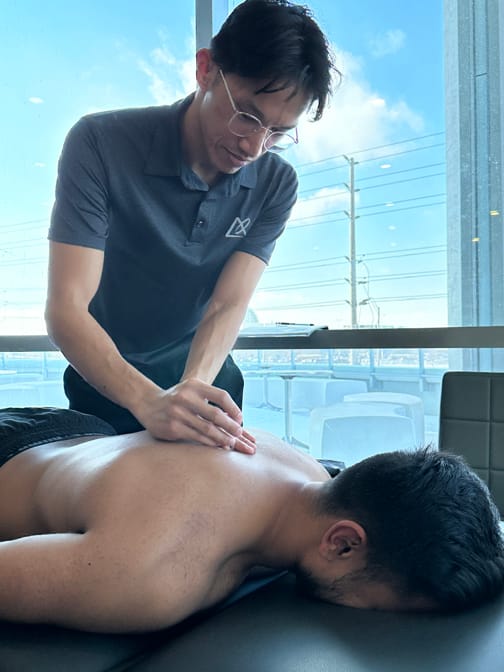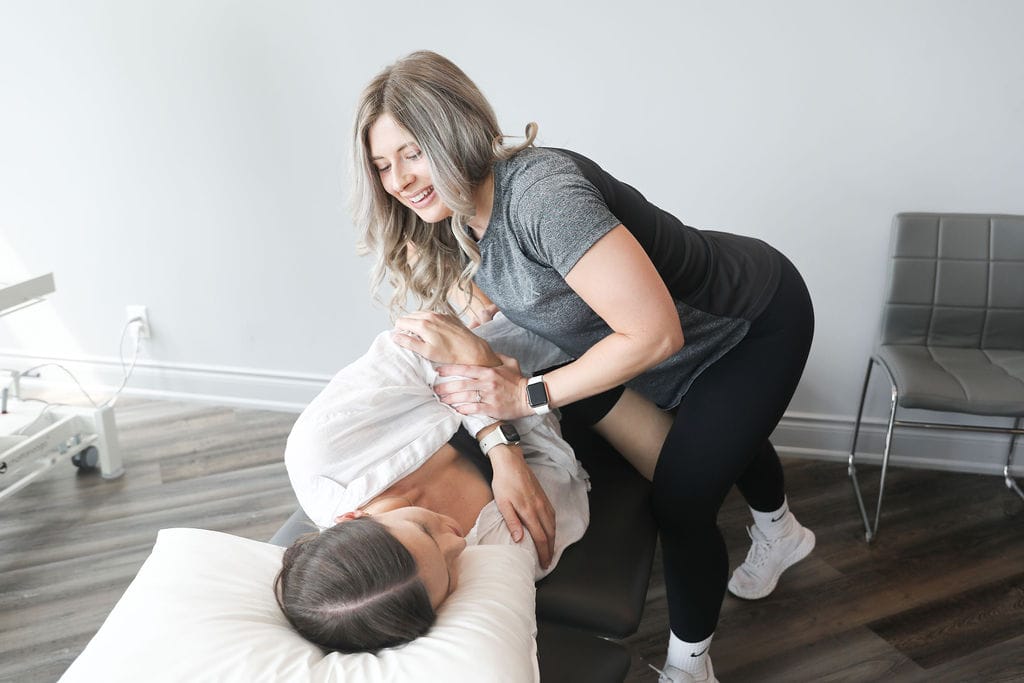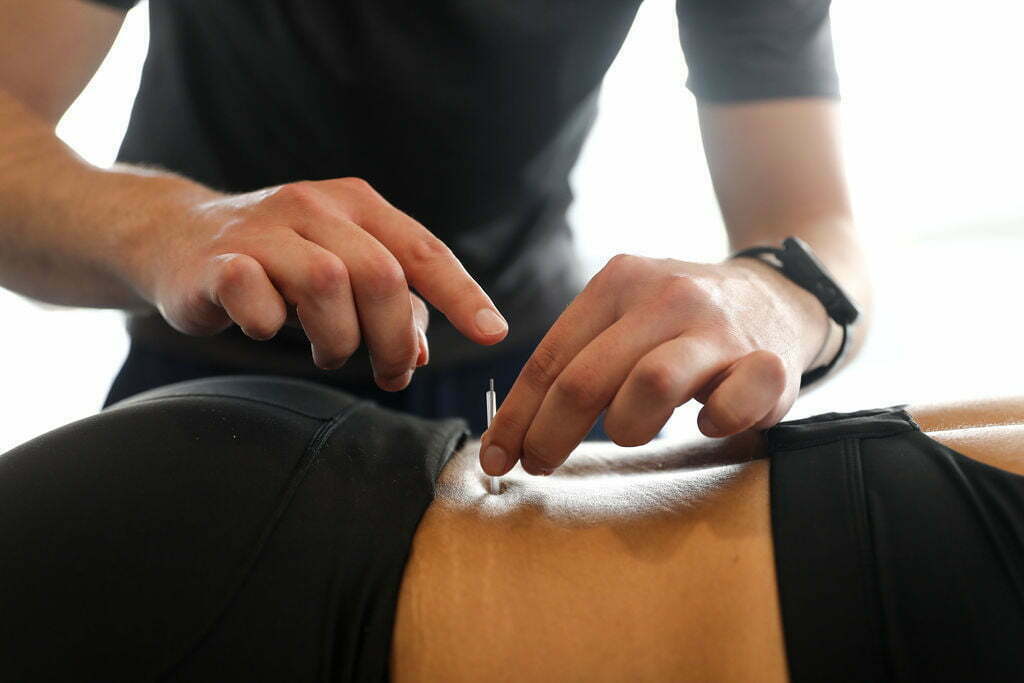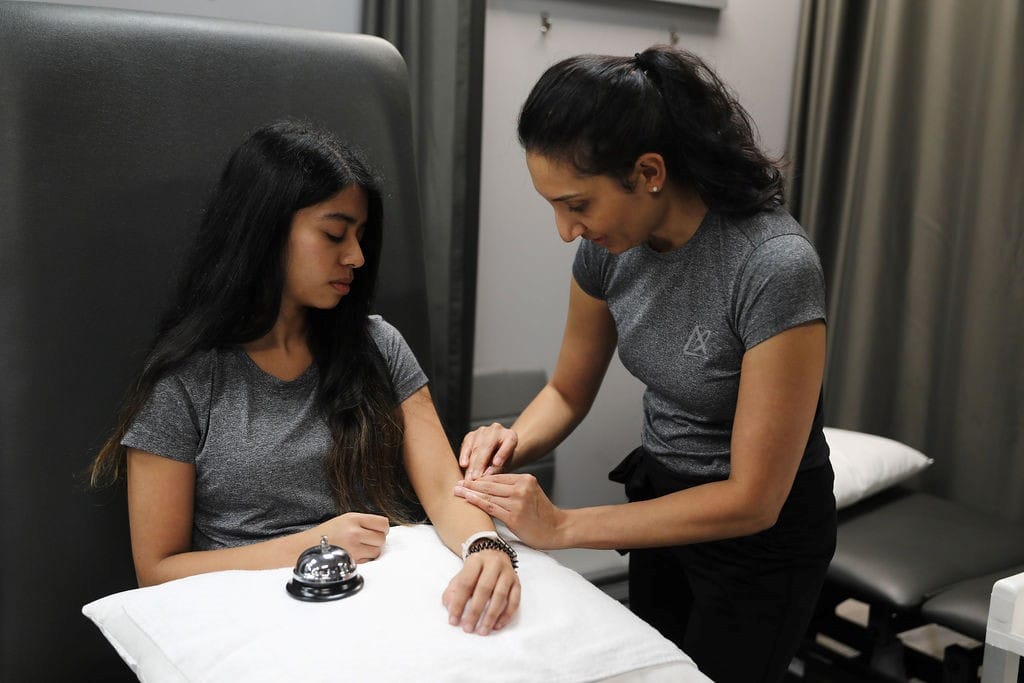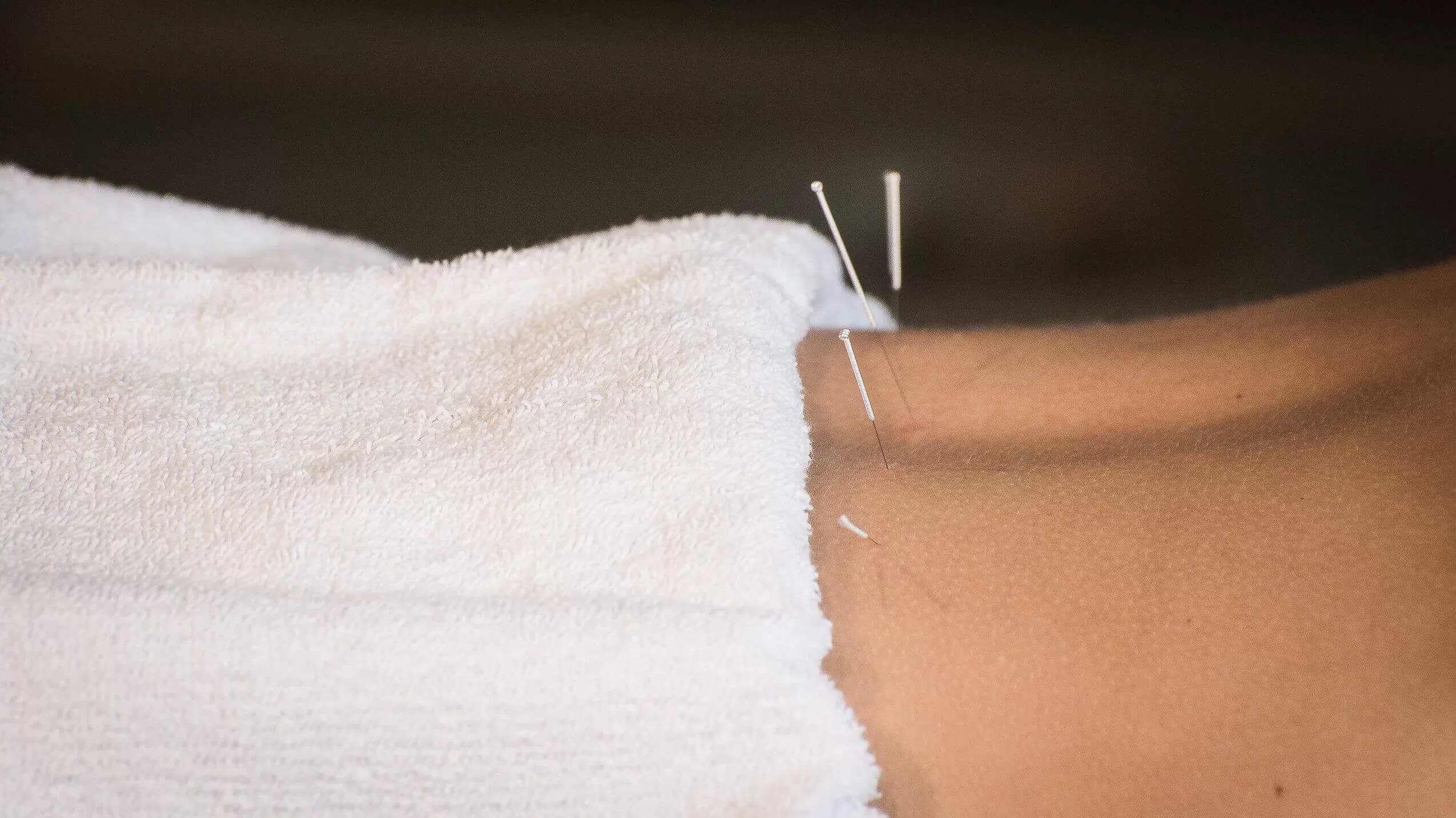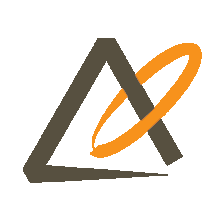In the realm of pain management and holistic health, both Intramuscular Stimulation (IMS) and acupuncture have gained popularity for their therapeutic benefits. While they share some similarities, they are distinct techniques with different underlying principles and applications. Understanding these differences can help you make an informed choice about which treatment might be right for you.
At Triangle Physiotherapy, our team of physiotherapists have training in Functional IMS, which is a highly effective, evidence-based dry needling technique.
What is Intramuscular Stimulation (IMS)?
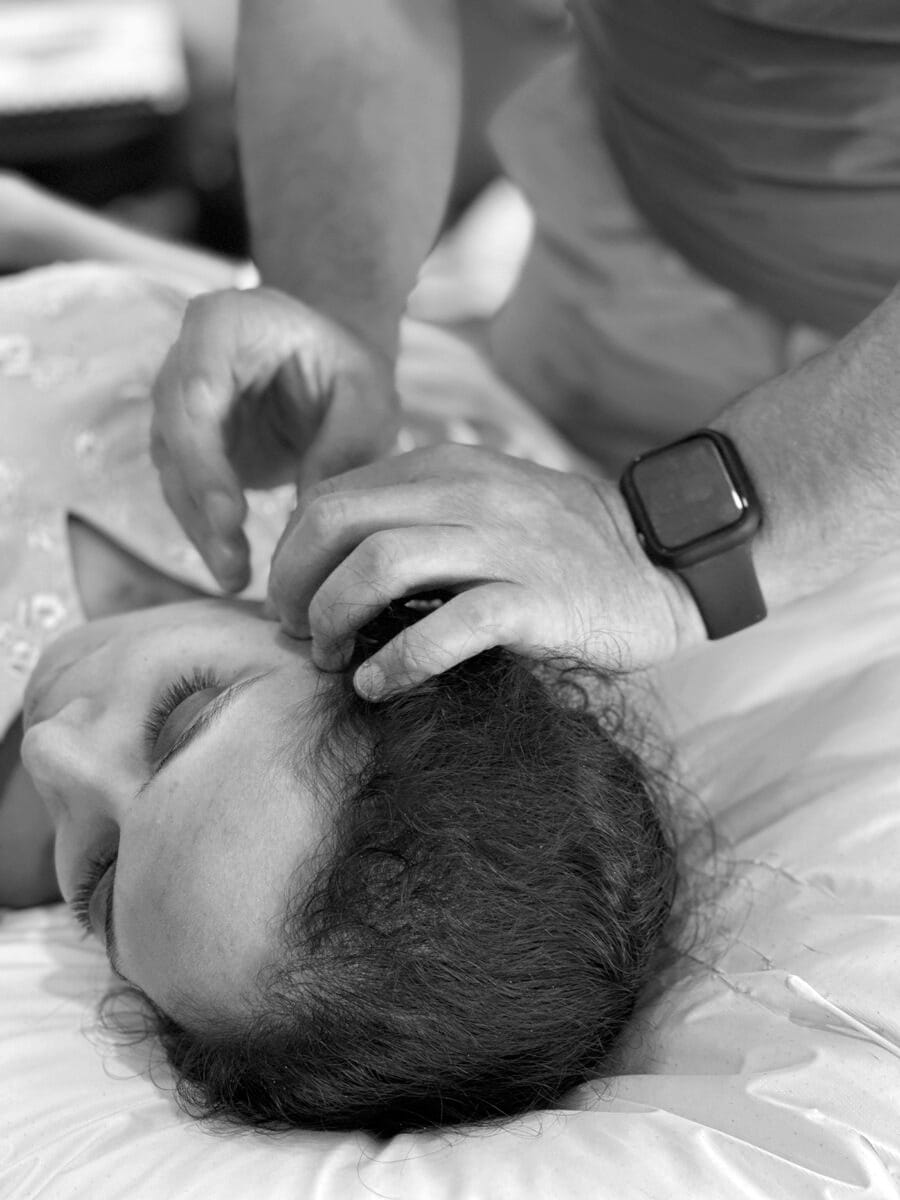
Intramuscular Stimulation is a form of dry needling that targets trigger points in muscles. Developed by Dr. Chan Gunn in the 1970s, IMS focuses on relieving chronic pain caused by muscle dysfunction. The technique involves inserting thin needles into specific areas of the muscle to release tightness and improve blood flow, which can help alleviate pain.
Key Features of IMS:
- Targeted Treatment: IMS specifically addresses myofascial pain syndrome, where muscle tightness contributes to discomfort.
- Needling Technique: The needles used in IMS are usually inserted deeper into the muscle tissue compared to acupuncture needles.
- Focus on Muscle Dysfunction: IMS is primarily used for conditions like chronic pain, sports injuries, and muscle spasms.
What is Acupuncture?
Acupuncture is a traditional Chinese medicine practice that has been used for thousands of years. It involves inserting fine needles into specific points on the body, known as acupoints, to balance the body’s energy (Qi) and promote healing. Acupuncture is commonly used for a wide range of conditions, including pain management, stress relief, and overall wellness.
Key Features of Acupuncture:
- Holistic Approach: Acupuncture aims to restore balance in the body and address various health concerns beyond just pain.
- Meridian System: The treatment is based on the concept of energy pathways (meridians) and the flow of Qi, which influences overall health.
- Wider Applications: Acupuncture is used for conditions such as anxiety, digestive issues, and even insomnia, in addition to pain relief.
Comparing IMS and Acupuncture
Technique and Focus
- IMS targets specific muscles and trigger points, primarily addressing musculoskeletal pain. The needles are typically inserted deeper into the muscle and may elicit a local twitch response, which can help release tension.
- Acupuncture focuses on restoring balance in the body’s energy system and is used for a broader range of health issues. The needles are usually placed at superficial levels and may not target specific muscle dysfunctions.
Pain Experience
- IMS may involve more discomfort during treatment due to the depth of needle insertion and the nature of trigger point therapy.
- Acupuncture is generally perceived as a gentler technique. Patients often report feeling relaxed during the session, with minimal discomfort.
Treatment Goals
- IMS is primarily used for pain relief related to muscular dysfunction, helping to improve movement and reduce chronic pain.
- Acupuncture aims to enhance overall well-being, addressing not only pain but also various health conditions by balancing the body’s energy.
Which Treatment is Right for You?
Choosing between IMS and acupuncture depends on your specific needs and health goals. If you are experiencing chronic muscle pain or specific musculoskeletal issues, IMS may be more suitable. On the other hand, if you are looking for a holistic approach to improve overall health or manage multiple symptoms, acupuncture could be the better option.
Consultation with Professionals
Consulting with a qualified practitioner is crucial for determining the best treatment for your situation. Many practitioners are trained in both IMS and acupuncture, allowing them to tailor a treatment plan based on your unique needs.
The expert physiotherapists at Triangle Physiotherapy understand that every individual perceives pain differently, so they make sure every treatment plan is customized. We look forward to helping you recover from your pain and getting you back to the activities you love to do!
Back Pain is a common condition that affects a lot of people worldwide. The causes of back pain can vary from physical injuries to sports injuries and pregnancy.
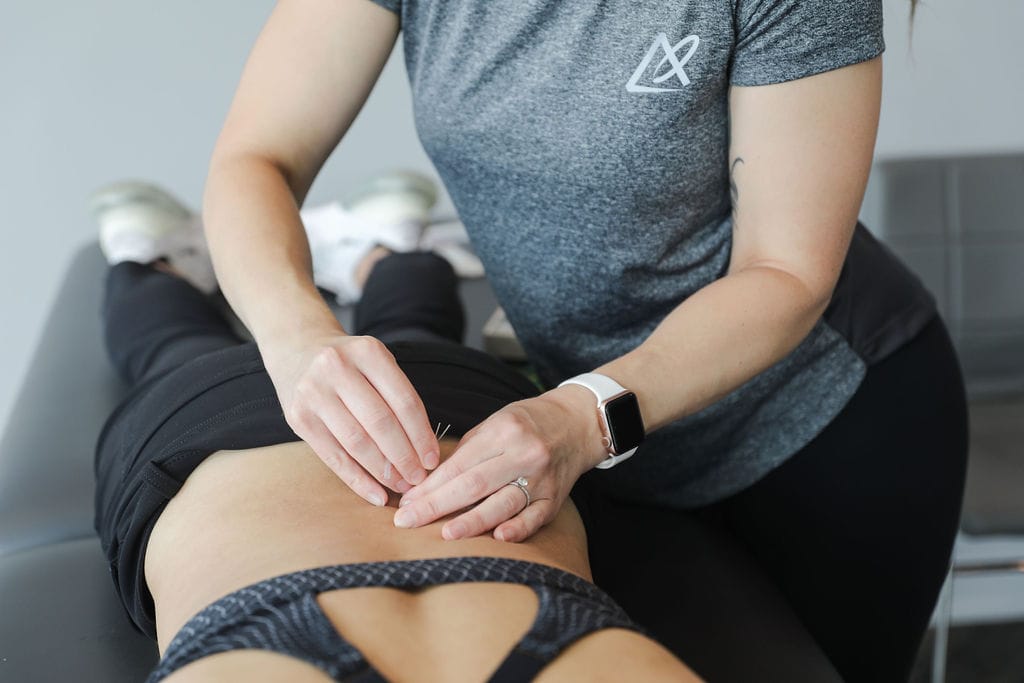
What are the causes of back pain?
Back pain can be caused due to various reasons like poor posture, overuse, or injury but many more causes can lead to back pain like inflammation and degenerative disc disease.
What are the common conditions of the back that the physiotherapists in Oakville can treat?
Some of the conditions most frequently treated by physiotherapists at our Physiotherapy Clinic in Oakville are:
- Sciatica
- Postural issues
- Degenerative Disc Disease
- Mechanical Back Pain
- Pregnancy-related back pain
- Disc Herniation
What type of treatments can help back pain?
At Triangle Physiotherapy Oakville, our physiotherapists use manual therapy, exercises, and pain management strategies to help with back pain. It is important to keep moving and staying active to avoid the recurrence of episodes.
Where can I find a physiotherapist in Oakville?
We have 8 locations with physiotherapists to help you.
- Pelvic Health Physiotherapy Etobicoke – Triangle Physiotherapy Etobicoke
- Oakville Pelvic Health – Triangle Physiotherapy Oakville
- Pelvic Health Physiotherapy North York – Triangle Physiotherapy North York
- Mississauga Pelvic Health – Triangle Physiotherapy Mississauga
- Downtown Pelvic Health – Triangle Physiotherapy King West
- Uptown Toronto Pelvic Health – Triangle Physiotherapy Lawrence Park
- Pelvic Physiotherapy Downtown Toronto – Triangle Physiotherapy Queens Quay
- Mississauga Pelvic Health – Triangle Physiotherapy Erin Mills
Our Oakville Physiotherapy Clinic is located only 2 lights West of Highway 403 on Dundas and 2 lights East of Trafalgar Road on Dundas.
“Effective back pain treatment is essential for improving your quality of life. Triangle Physiotherapy offers expert services across the GTA, including Physiotherapy in Etobicoke, Oakville, North York, Toronto, Lawrence Park, Queens Quay, Erin Mills, Mississauga, and Liberty Village. Our skilled physiotherapists are dedicated to helping you find relief from back pain and restore your mobility.”
What is Acupuncture?
Acupuncture is an ancient, safe and effective alternative to medication and, in some cases, surgery. It stimulates the release of endorphins – the body’s natural pain-relieving neuro-hormones – through the insertion of needles into specific anatomical points (acupuncture points) to encourage natural healing.
What conditions can be treated with Acupuncture?
- Back/Neck pain
- Rotator Cuff Strain
- Knee Injuries
- Plantar Fasciitis
- Arthiritis
- Headaches
- Tennis/Golfer’s Elbow
- Achilles Tendinitis
- Ankle Sprain
- Bursitis
Does acupuncture hurt?
Acupuncture is a gentle treatment. Most patients find that the treatments are relaxing and cause minimal discomfort. Acupuncture needles are very fine, metallic, and as thin as a hair, making them quite painless upon insertion. Everyone experiences acupuncture differently, but most feel no pain or very minimal pain as the needles are inserted. You may experience a mild aching sensation or warmth around the needle site.
What is Dry Needling?
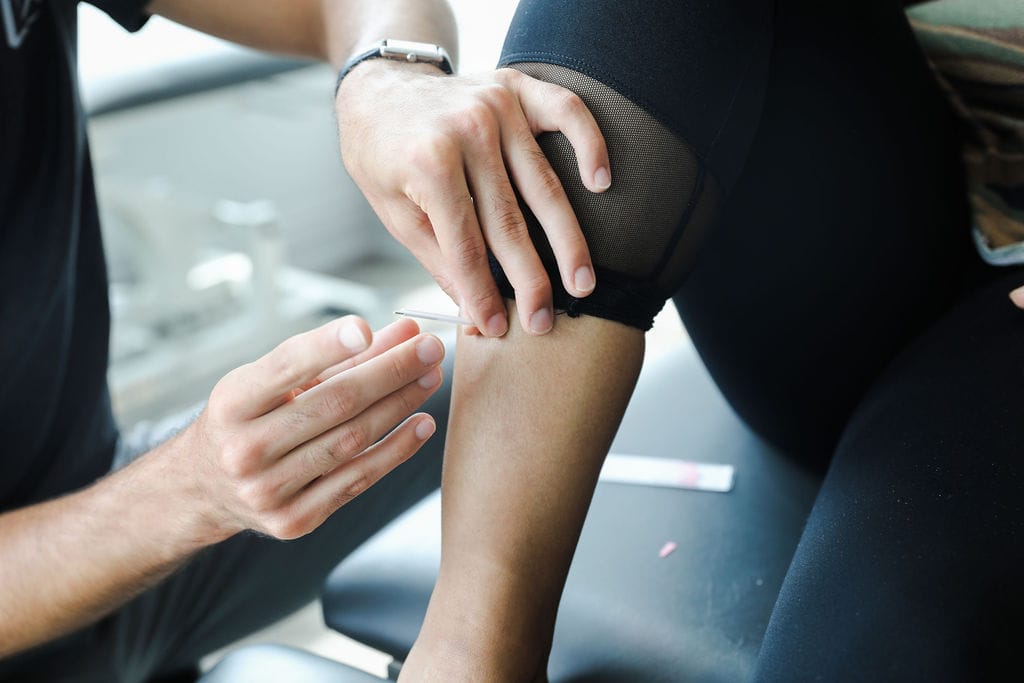
Dry Needling (DN) involves using a sterile needle to stimulate the motor point of the muscle. DN is also used on trigger points, or “knots”, that people sometimes feel in their muscles. This stimulation causes an involuntary twitch response, which helps to deactivate the tight muscle and allows it to loosen up.
What conditions can be treated with
Dry Needling?
- Rotator cuff tendonitis,
- Lateral epicondylitis (Tennis Elbow),
- Medial epicondylitis (Golfer’s Elbow),
- Piriformis tightness,
- Cervicogenic headaches,
- Low back pain,
- Repetitive stress injuries, and many more!
Does dry needling hurt?
Generally, the insertion of the needle is not felt. The local “twitch response” may provoke a brief pain sensation that has been described as a tingling, aching or cramping sensation.
Are there any side effects to Dry Needling?
Side effects may vary among individuals. Typically, only mild muscle soreness or skin bruising. Your physiotherapist will educate you on the benefits and side effects of dry needling prior to performing the technique on you.
Can physiotherapists and chiropractors perform acupuncture and dry needling?
Yes, physiotherapists, chiropractors, RMTs and naturopaths that have training in acupuncture can perform this technique in a safe an effective manner.
Our More Locations
Physiotherapy Etobicoke | Physiotherapy Oakville | Physiotherapy North York | Physiotherapy Toronto | Physiotherapy Lawrence Park | Physiotherapy Mississauga | Physiotherapy Queens Quay | Physiotherapy Mississauga Erin Mills | Physiotherapy Liberty Village
Book an appointment with a practitioner that does dry needling to get help with your condition.
“Choosing between dry needling and acupuncture depends on your specific needs and treatment goals. Triangle Physiotherapy offers expert services across the GTA, including Physiotherapy in Etobicoke, Oakville, North York, Toronto, Lawrence Park, Queens Quay, Erin Mills, Mississauga, and Liberty Village. Our experienced therapists can help you determine which treatment is right for you, providing personalized care to address your pain and enhance your well-being.”
Golfer’s elbow and Tennis Elbow are both tendonitis. The difference is Golfer’s elbow occurs on the inner side of the elbow while Tennis Elbow occurs on the outer side of the elbow. Tennis elbow, also known as lateral epicondylitis is the inflammation of the tendon that connects the forearm muscles to a bony prominence on the outside of the elbow known as the lateral epicondyle. Golfer’s elbow, on the other hand, is known as medial epicondylitis because the inflammation is on the tendons which are attached to the medial epicondyle.
How Is Tennis Elbow Diagnosed?
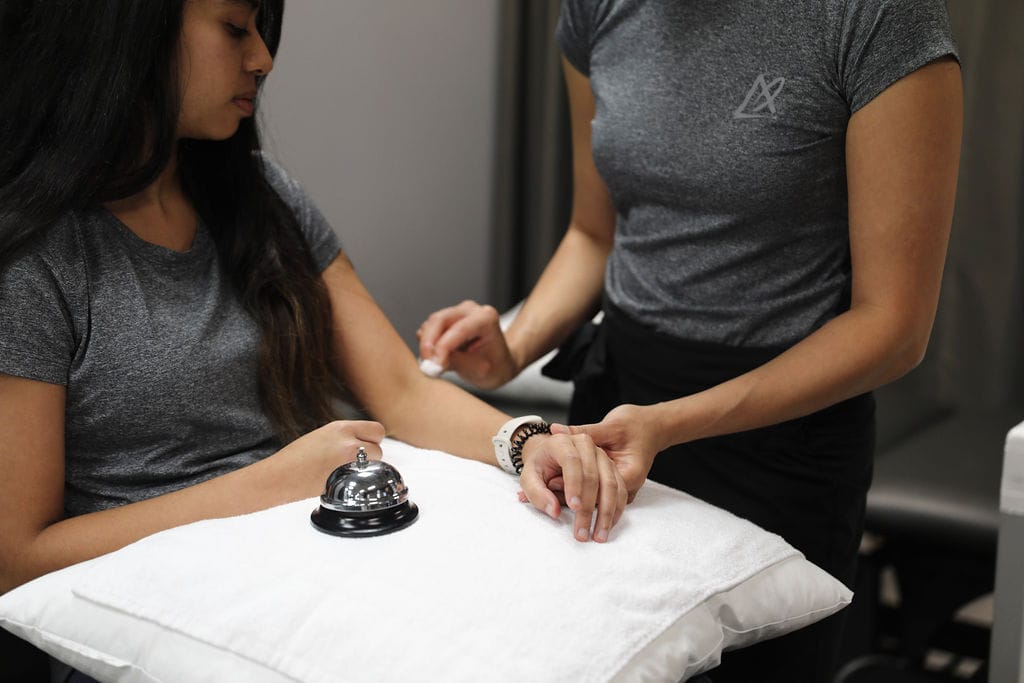
Your physiotherapist will evaluate tennis elbow by reviewing your medical history, performing and reviewing your medical history. A doctor may recommend a X-ray, EMG or MRI to assess the severity of the condition.
A physiotherapist can also conduct a detailed assessment of your elbow and the surrounding structures in order to create a personalized treatment plan for you. Special tests such as Cozen’s and Mills Test can also be used to diagnose Tennis elbow.
What are the complications of a Tennis Elbow?
Complications of Tennis elbow or lateral epicondylitis may include tendon rupture, recurrence of the injury, chronic pain, nerve entrapment in the forearm, and failure to improve despite both nonsurgical and no surgical treatment.
Cause of Tennis Elbow and Treatment
What causes a Tennis elbow and who might get a Tennis Elbow?
Some causes of Tennis elbow are:
- weak wrist muscles,
- use of tennis racquets that are too short,
- weakened muscles of the shoulder and wrist,
- repetitive hand motions,
- poor tennis technique,
- frequent use of hand tools,
- lifting heavy objects, and
- excessive gripping activities.
Despite the name, Tennis elbow is not only for tennis players although they tend to often develop tennis elbow because of the repetitive muscle use and gripping activities the sport entails. People whose professions involve repetitive use of the wrist and forearm are more likely to develop lateral epicondylitis.
Some professions, such as painters, dentists, plumbers, carpenters, musicians, and cooks, may develop Tennis elbow which can also be caused by the repetitive use of a keyboard and mouse.
What Is The Best Treatment For Tennis Elbows?
The majority of tennis elbow cases can be successfully treated without surgical intervention. How a tennis elbow is treated may vary depending on which medical professional you choose to see.
Research has shown that physiotherapy is the most effective treatment of the Tennis elbow.
Tennis Elbow Physiotherapy Treatment
- Therapeutic Ultrasound
- Acupuncture
- Tennis elbow treatment exercises
- Deep tissue massage
- Shockwave therapy
- Taping or brace
- TENS
- Modified activities
- Hot and cold packs
How does massage help heal Tennis elbow?
Tennis Elbow Massage Treatment helps improve circulation, stimulate collagen production, and increases mobility in the affected area.
What Can I Do To Prevent Tennis Elbow?
There are many ways to prevent Tennis elbow such as:
- Stretching regularly.
- Strengthening of the forearm muscles.
- Modifying activities that contribute to pain.
- Warming up before playing tennis and other sports and ensuring the stability of the wrist.
What are some Tennis elbow exercises which can be done at home to help prevent recurrence?
Specific Tennis elbow exercises to strengthen as well as stretch the muscles that are attached to the injured tendon will certainly help speed up healing which then increases its resistance to repetitive stress… Some of these Tennis elbow treatment exercises are Stress ball squeeze, finger stretch, wrist extension, flexion stretch, forearm extension, flexion, supination, and pronation strengthening exercises.
Are there any natural Tennis elbow treatments I can do at home while I wait to see a physiotherapist?
Resting and avoiding activities that aggravate your pain can be beneficial. You may also try to apply an ice pack for 15 mins three times a day.
What is the best treatment for chronic Tennis elbow?
The most effective treatment for chronic tennis elbow has always been physiotherapy and exercise. If physiotherapy does not fully heal it, however, steroid injections, braces, and surgery may also help.
Our physiotherapists in Toronto, Midtown Toronto, Mississauga, North York and Oakville can help you with tennis elbow. Book your appointment here.
“Effectively treating tennis elbow and golfer’s elbow requires specialized physiotherapy care. Triangle Physiotherapy offers expert services across the GTA, including Physiotherapy in Etobicoke, Oakville, North York, Toronto, Lawrence Park, Queens Quay, Erin Mills, Mississauga, and Liberty Village. Our experienced physiotherapists can help you recover from elbow pain and regain strength with personalized treatment plans.”
Acupuncture is a healing technique used in TCM where practitioners stimulate specific points on the body, most often by inserting thin, sterile needles into the skin.
Acupuncture mainly focuses on correcting imbalances of energy in the body & improves the body’s function by promoting the natural, self-healing process. It is now widely practiced as a therapeutic intervention in North America, in addition to Asia.
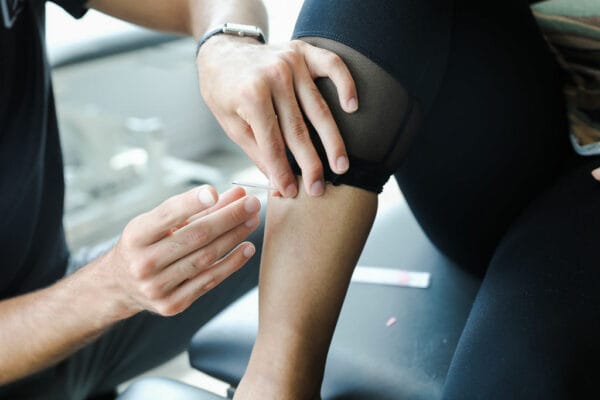
What can acupuncture help with?
The most common method used to stimulate acupuncture points or acupoints is the insertion of fine, sterile needles into the skin. This technique can release blocked Qi in the body and stimulates the body’s natural healing response through various physiological systems. Studies suggest that acupuncture can ease various types of pain generated by conditions such as:
- Low-back pain
- Neck pain
- Knee pain
- Osteoarthritis
- Headaches
- Migraine
- Depression
- Rheumatoid arthritis
- Smoking addiction
- Chronic asthma
- Epilepsy
- Insomnia
Also Read, Physiotherapy Etobicoke
How many treatments will I need?
The frequency of treatments differs from person to person based on their health condition. Some people experience relief in the first treatment itself, whereas others with complex or long-standing chronic conditions may notice more of a significant benefit after multiple treatment sessions. Generally, fewer treatments are required for acute conditions and more treatments are required for chronic conditions. An individualized treatment plan that includes the expected number of treatments will be discussed during the first visit.
In recent years, acupuncture has gained much more traction in Western Medicine. The majority of research on the use of acupuncture in Western Medicine has focused on its use for pain management and inflammation reduction. Thus far, the majority of this research has yielded positive results, indicating that acupuncture is indeed a useful technique for pain management and inflammation reduction.
Our More Locations
Physiotherapy Etobicoke | Physiotherapy Oakville | Physiotherapy North York | Physiotherapy Toronto | Physiotherapy Lawrence Park | Physiotherapy Mississauga | Physiotherapy Queens Quay | Physiotherapy Mississauga Erin Mills | Physiotherapy Liberty Village
At Triangle Physiotherapy, our practitioners and therapists will thoroughly assess your past medical history and will answer any questions that you might have about your condition. This New Year, make sure that you focus on your health to ensure that you have a productive and healthy year!
Acupuncture can be an effective treatment for pain relief, stress management, and promoting overall wellness. If you are looking for physiotherapy services to complement acupuncture, there are clinics in physiotherapy Etobicoke, Oakville, North York, Toronto, Lawrence Park, Queens Quay, Erin Mills, Mississauga, and Liberty Village. These clinics offer comprehensive care with personalized treatment plans to help you achieve optimal health and recovery.
